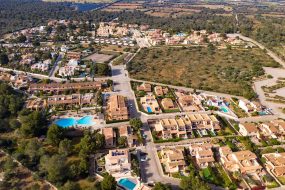
Introduction:
As we step into the year 2024, the real estate market in Spain is experiencing a dynamic transformation shaped by various economic, societal, and technological factors. Investors, homeowners, and industry professionals are closely watching the evolving trends that promise both challenges and opportunities. In this article, we delve into the key real estate trends shaping Spain in 2024.
- Sustainable Development and Eco-Friendly Architecture: Spain is placing a significant emphasis on sustainable development and eco-friendly architecture. The government has introduced policies encouraging energy-efficient buildings, green spaces, and sustainable infrastructure. Investors are increasingly considering environmentally responsible projects, and sustainable features are becoming a key selling point for properties.
- Technology Integration: The adoption of technology in the real estate sector continues to rise. Virtual reality (VR) property tours, blockchain for transparent transactions, and smart home technologies are becoming standard features. Homebuyers are demanding more tech-savvy solutions, and real estate professionals are leveraging digital tools for marketing and transactions.
- Remote Work Influences Property Preferences: The global shift towards remote work has impacted property preferences. Homebuyers are now prioritizing homes with dedicated office spaces, high-speed internet, and proximity to co-working spaces. As the demand for flexible living and working arrangements grows, suburban and rural areas are gaining popularity over traditional urban centers.
- Rise of Co-Living and Co-Working Spaces: Co-living and co-working spaces are gaining traction as young professionals and digital nomads seek more flexible and affordable housing options. Developers are adapting to this trend by creating mixed-use spaces that offer a combination of living, working, and recreational facilities, catering to the evolving lifestyle needs of modern residents.
- Foreign Investment Continues: Spain remains an attractive destination for foreign real estate investors. The country’s stable political environment, beautiful landscapes, and diverse culture make it a desirable location. The post-pandemic recovery and government initiatives to attract foreign investment contribute to a positive outlook for the real estate market.
- Affordable Housing Initiatives: The issue of affordable housing is being addressed through various government initiatives. Subsidies, tax incentives, and public-private partnerships aim to increase the supply of affordable homes, particularly in urban areas where housing costs have risen steeply in recent years.
- Tourism-Driven Markets: Spain’s strong tourism industry significantly influences certain real estate markets. Coastal regions and popular tourist destinations continue to attract investors looking to capitalize on short-term rental opportunities. However, a balance is being sought to ensure sustainable growth without overburdening local infrastructure.
- Aging Population Impact: Spain, like many European countries, is experiencing an aging population. This demographic shift is influencing the real estate market, with a growing demand for age-friendly housing, healthcare facilities, and amenities catering to seniors. Developers are incorporating age-inclusive designs and services to meet the needs of this demographic.
Conclusion:
As Spain navigates the real estate landscape in 2024, it is evident that a combination of sustainability, technology, and societal shifts is shaping the industry. Whether you’re a prospective buyer, investor, or industry professional, staying attuned to these trends will be crucial for making informed decisions in this ever-evolving market. The real estate sector in Spain is not just about properties; it’s about embracing a future that is sustainable, tech-driven, and adaptable to the changing needs of its residents.








